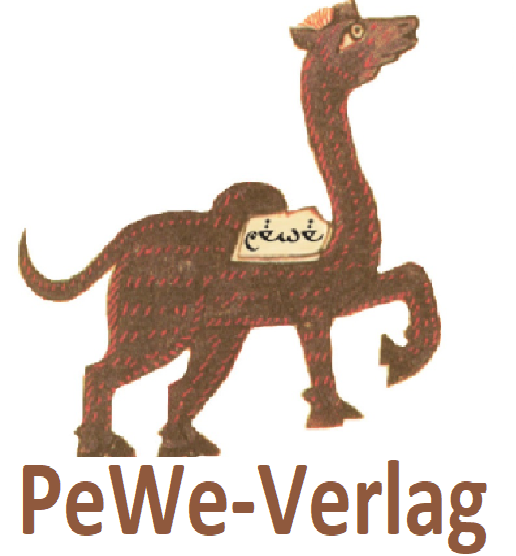
Syene IV. Die ptolemäische und römische Keramik aus den Arealen 2 und 13c. Typochronologie und weiterführende Studien.
Beiträge zur ägyptischen Bauforschung und Altertumskunde, Band 22
Format: 35 x 24,5 cm — Hardcover
Umfang: 426 Seiten, 49 Abbildungen und 82, teils farbige Tafeln
ISBN: 978-3-935012-43-0
Preis: 85,00 €
© PeWe-Verlag 2020
Am ersten Katarakt gelegen, war die oberägyptische Stadt Syene – das moderne Assuan – in der Antike ein wirtschaftliches und politisches Zentrum und bildete eine wichtige Verbindung zwischen Ägypten und dem südlich angrenzenden Nubien. Sie fungierte, zusammen mit der gegenüberliegenden Nilinsel Elephantine, als Handelsknotenpunkt für den Austausch von Gütern von und nach Innerafrika, darunter Luxuswaren wie Gold und Elfenbein. Durch die Erschließung neuer Tonlagerstätten entwickelte sich die Region von Syene in der ptolemäischen Zeit zu einem bedeutenden Produktionszentrum für Keramik, dessen Produkte innerhalb von Ägypten und später über die Landesgrenzen hinaus exportiert wurde.
In einem mehrjährigen Projekt des Österreichischen Archäologischen Instituts, Zentrale Wien in Kooperation mit dem Schweizerischen Institut für Ägyptische Bauforschung und Altertumskunde Kairo stand die Erforschung der Alltagskultur in Syene und Elephantine von ptolemäischer bis spätantiker Zeit auf Basis der materiellen Hinterlassenschaft aus Wohnbauten im Fokus. Im Rahmen dieses Projektes wurde unter anderem das ptolemäische und römische Fundmaterial aus mehreren Wohnkomplexen von Syene analysiert. Diese Ergebnisse werden nun in diesem Band präsentiert. Hauptaugenmerk dieser Arbeit liegt, neben einer ausführlichen Typochronologie, auf der kontextuellen Auswertung des Materials sowie einer umfassenden Charakterisierung der Keramik jener Zeitstellung unter Berücksichtigung der unterschiedlichen Fabrikate. Eine Besonderheit bildet dabei das lokal produzierte Geschirr, dessen Produktionsbeginn durch diese Arbeit nun in das frühe 2. Jh. v. Chr. gesetzt werden konnte. Erstmals werden die Zusammenhänge zwischen den lokalen Warengruppen, Gefäßformen und Fabrikaten sowie die Unterschiede von ptolemäischer Zeit gegenüber der römischen Kaiserzeit detailliert aufgezeigt. Anhand des Formenspektrums von Syene wird versucht die Übernahme fremder Speise- und Trinksitten sowie Innovationen im Kochprozess aufzuzeigen. Durch die Auswertung der Importkeramik, insbesondere der Sigillata- und Amphorenfragmente, ist es ferner möglich Rückschlüsse über die Handelsbeziehungen zwischen dem scheinbar abgelegenen Syene und dem mediterranen Raum zu ziehen.
Situated on the first cataract, the Upper Egyptian city of Syene – modern Aswan – was an economic and political centre in antiquity and formed an important link between Egypt and neighbouring Nubia to the south. It functioned, together with the Nile island of Elephantine opposite, as a trading hub for the exchange of goods to and from Inner Africa, including luxury goods such as gold and ivory. Through the exploitation of new clay deposits, the region of Syene developed in the Ptolemaic period into an important production centre for ceramics, whose products were exported within Egypt and later beyond the country’s borders.
In a multi-year project of the Austrian Archaeological Institute, Head Office Vienna, in cooperation with the Swiss Institute for Egyptian Building Research and Archaeology Cairo, the focus was on research into everyday culture in Syene and Elephantine from Ptolemaic to Late Antique times on the basis of the material legacy from residential buildings. Within the framework of this project, the Ptolemaic and Roman find material from several residential complexes of Syene was analysed, among other things. These results are now presented in this volume. The main focus of this work, apart from a detailed typochronology, is on the contextual evaluation of the material as well as a comprehensive characterisation of the pottery of that period, taking into account the different makes. A special feature is the locally produced tableware, the production of which can now be dated to the early 2nd century BC. For the first time, the interrelationships between local product groups, vessel forms and manufactures as well as the differences between the Ptolemaic period and the Roman Imperial period are shown in detail. The spectrum of Syene forms is used to illustrate the adoption of foreign food and drink customs as well as innovations in the cooking process. By analysing the imported pottery, especially the sigillata and amphora fragments, it is also possible to draw conclusions about the trade relations between the seemingly remote Syene and the Mediterranean region.
